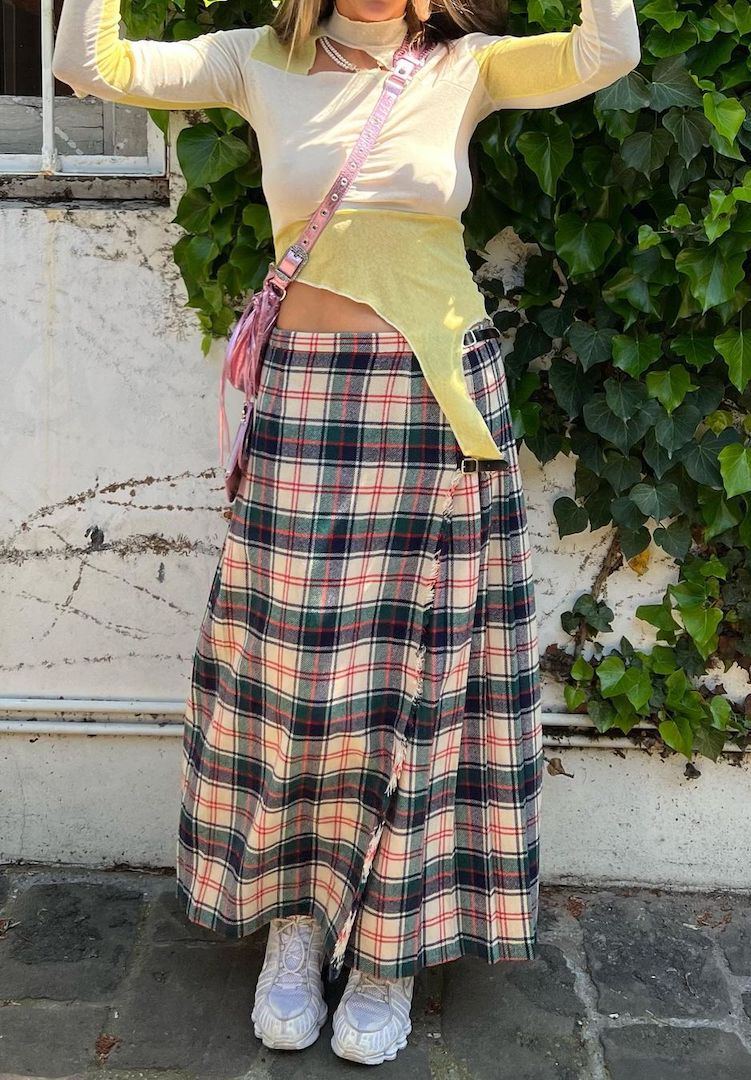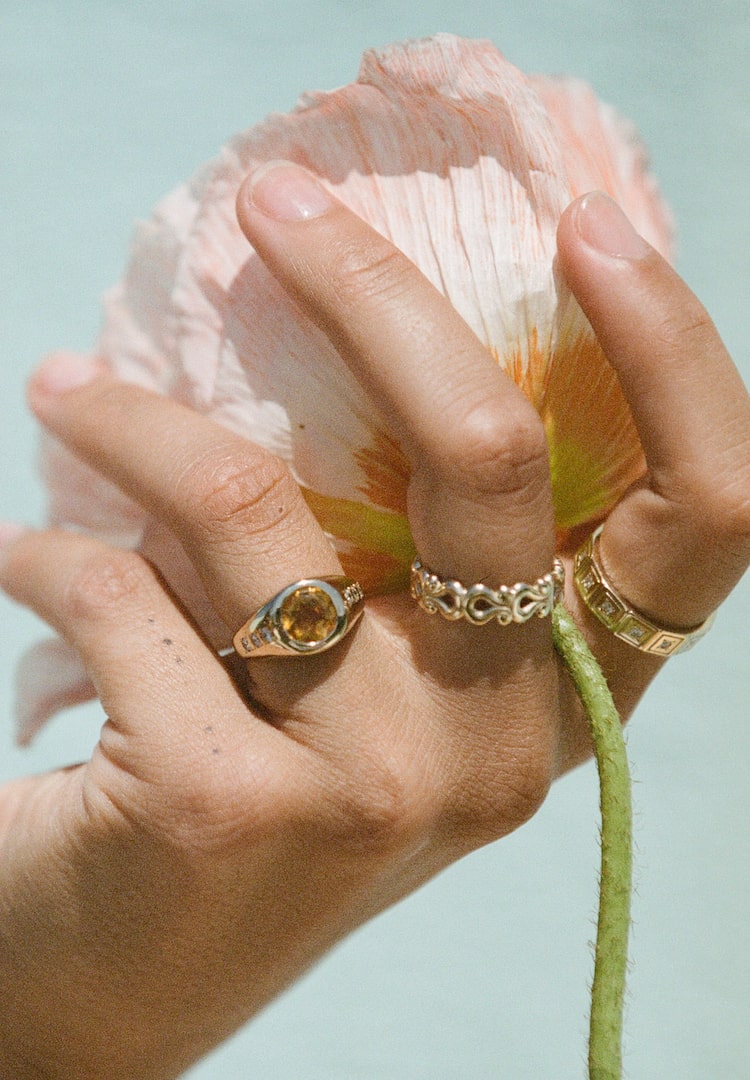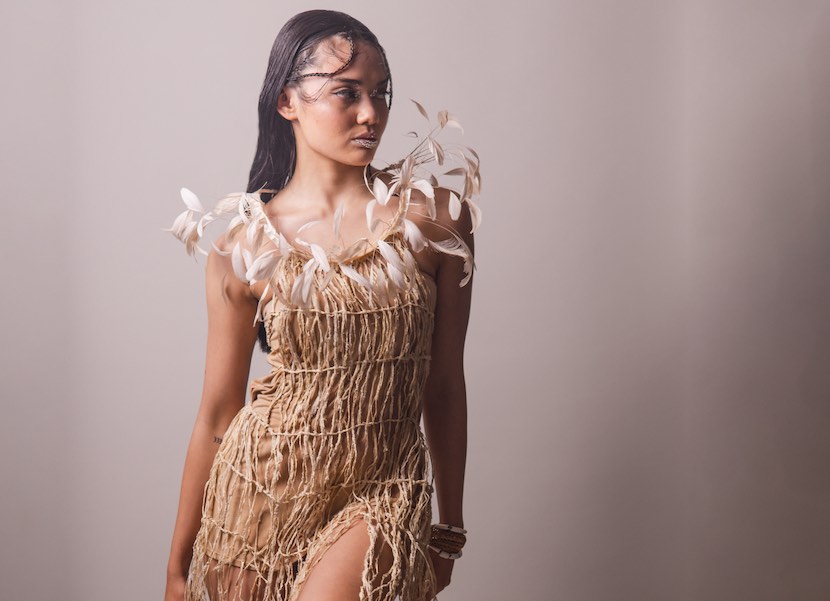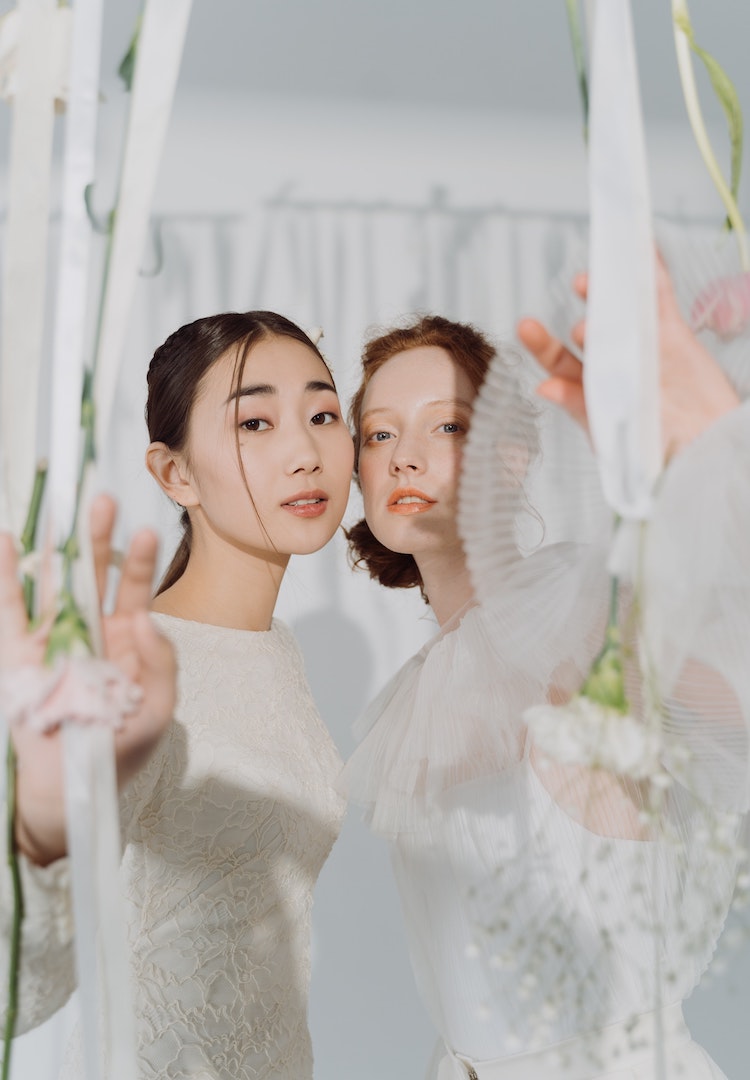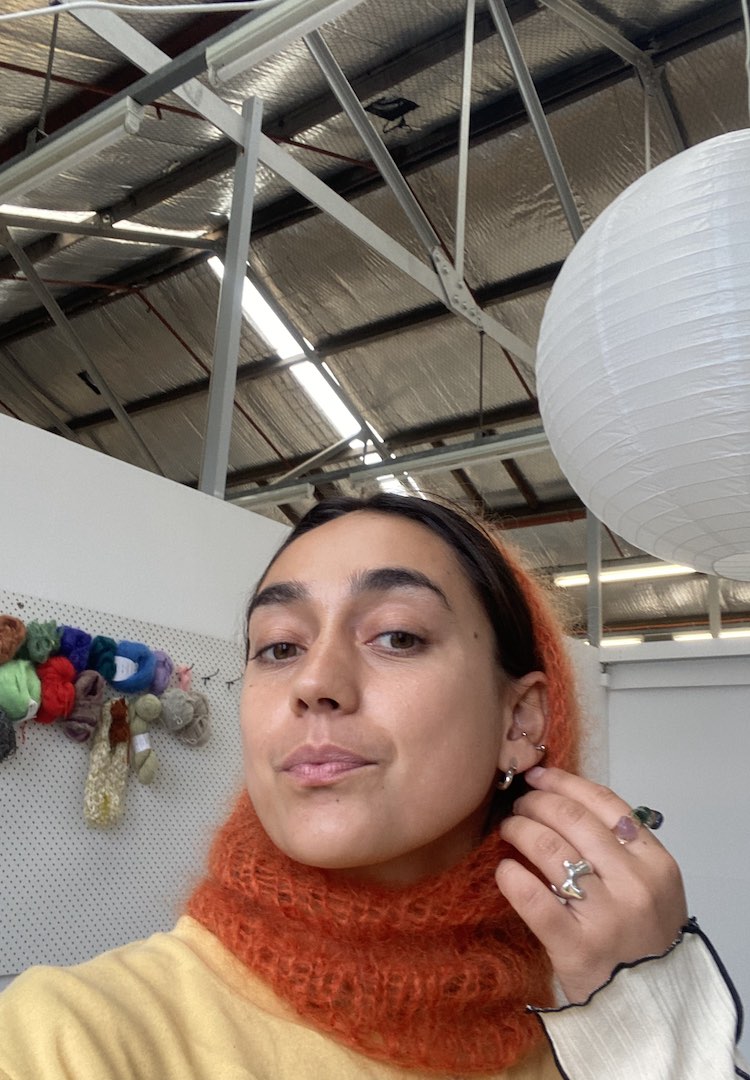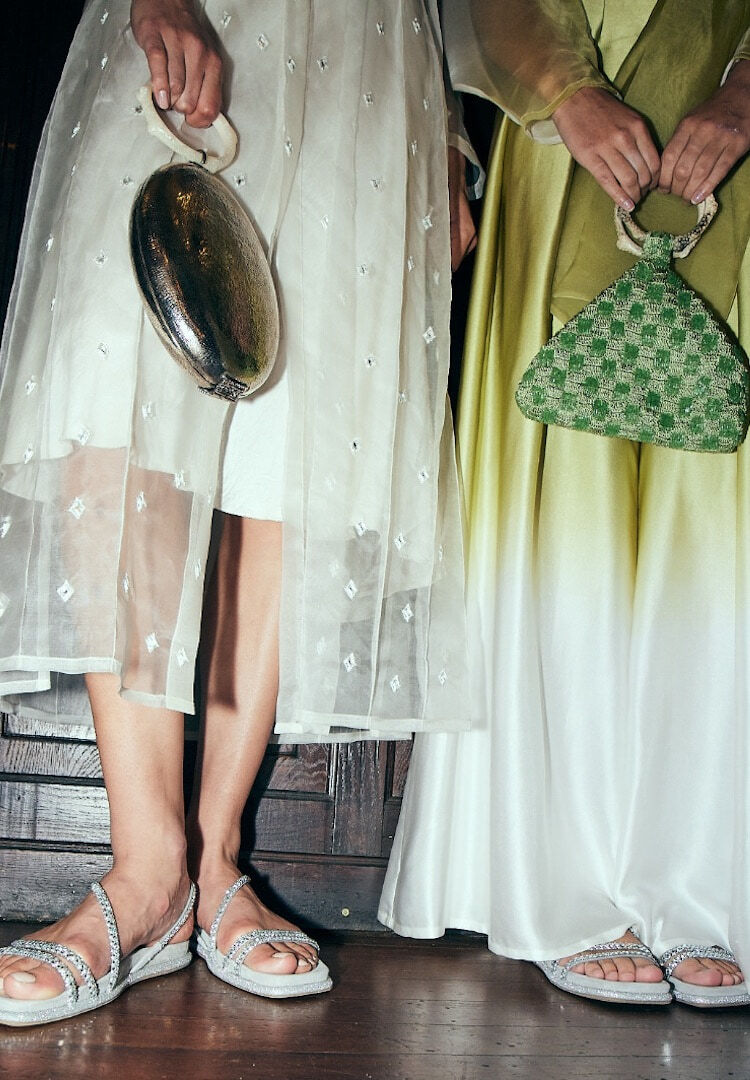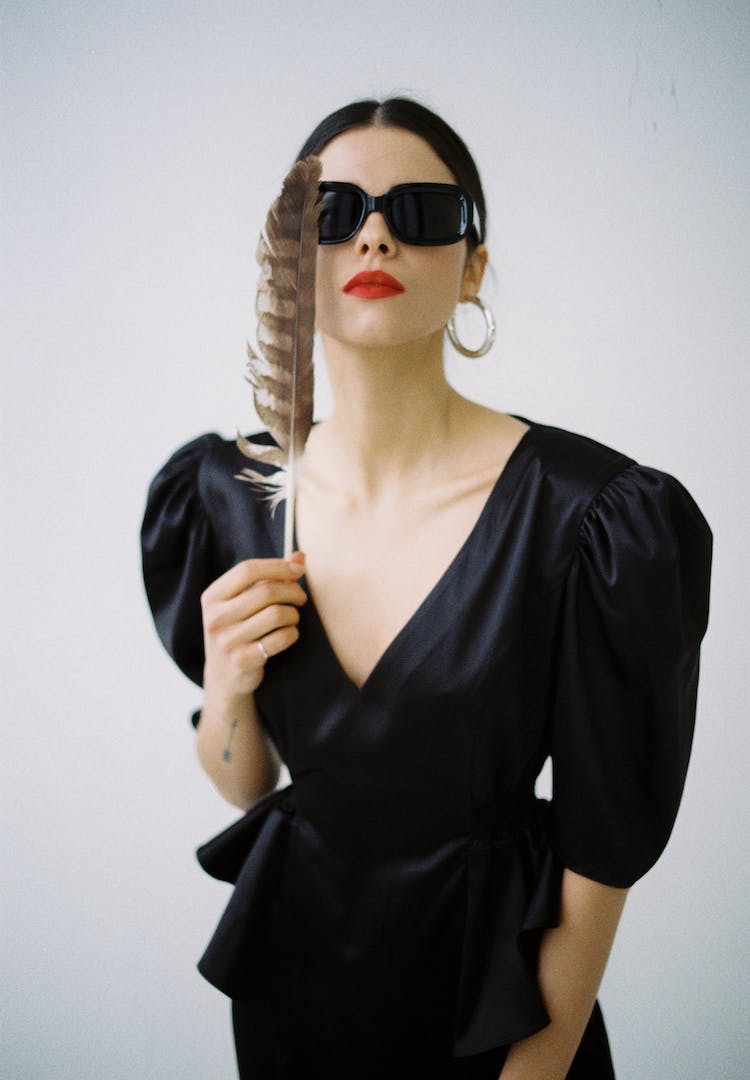How three designers are weaving traditional techniques into contemporary fashion
PHOTOGRAPHY BY JOSH HOWLETT AND KYLE ARCHIE KNIGHT FOR MOB IN FASHION
WORDS BY GABBY PARKER CAPES
“Fashion and textiles are my forms of storytelling. Each stitch and brushstroke carries a cherished memory of Country, culture and kin.”
Nestled among a vibrant Melbourne Fringe Festival schedule, Mob in Fashion‘s recent Future/History runway show was a love letter to Country. Models were adorned with freshwater shells collected from slow-moving creeks, native grasses plucked from sweeping plains and ochre eroding from the bedrock of a torn-up shoreline.
Founded by model and First Nations Culture and Safety Consultant Nathan McGuire, Mob in Fashion launched this year as a platform to increase the representation of First Nations creatives within the Australian fashion industry. The Future/History runway, which took place earlier this month, carved out space for meaningful looks from Indigenous designers, held together by materials and techniques refined over thousands of years.
For more fashion news, shoots, articles and features, head to our Fashion section.
Creative director and Yorta Yorta man Rhys Ripper worked in collaboration with the three designers featured in the show, Taungurung/Dja Dja Wurrung woman Cassie Leatham, Quandamooka woman Delvene Cockatoo-Collins and Wiradjuri/Gangulu/Yorta Yorta woman Lillardia Briggs-Houston, to bring the inaugural showcase together. Below, we delve into each of these designers’ practices.
Cassie Leatham
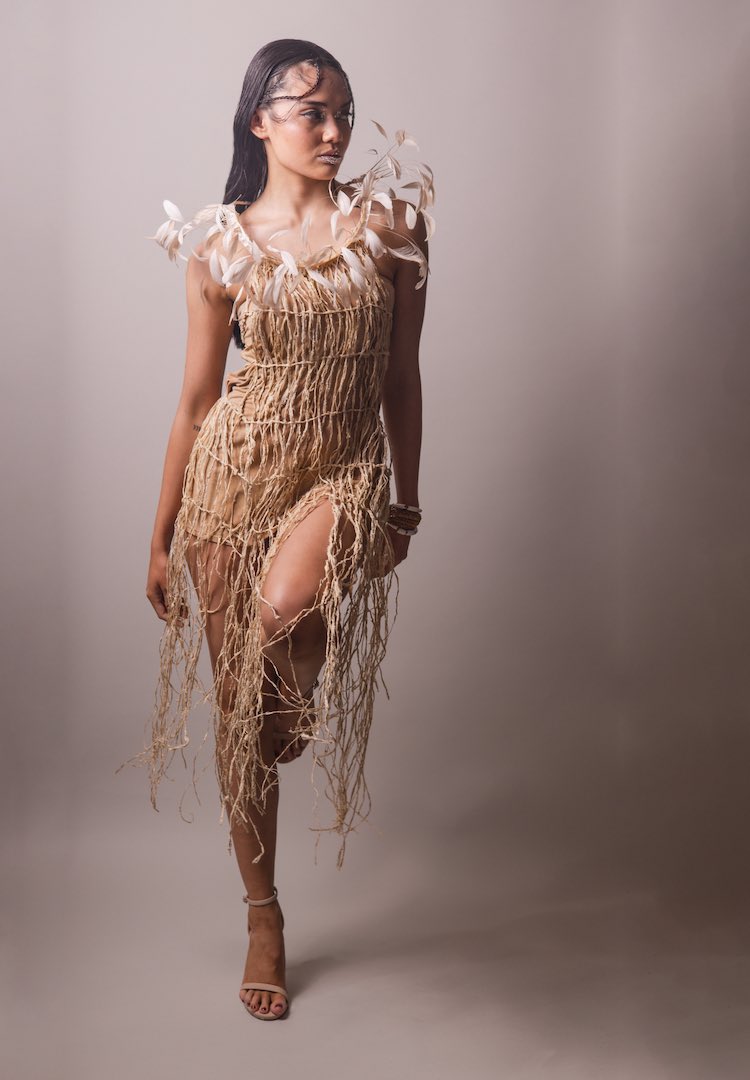
Most people treat grass as something to cut, poison or trample on. But between August and September, when the river reeds snaking out of the water have hardened, Cassie Leatham wades through to harvest them, mindful of the way her ancestors once foraged. She taps the stalks, pulling back the leaves to check for insects and native bees who may be hiding among them.
Once home, Cassie cleans the pulp – a process that can take upwards of three hours. She cuts the reeds with a sharp obsidian gemstone, filing them down with sandpaper and polishing the surface to prevent them from catching. She then begins weaving, using a handmade bone needle carved from a pair of grinding rocks.
Among other things, Cassie is a master weaver. Her fashion label Yanggurdi (meaning ‘walkabout’ in Taungurung language) debuted handwoven pieces in the Future/History show including bags, earrings, anklets and bracelets all used as ceremonial adornments, alongside an eel trap which outside of the runway lays submerged in the creek. Future/History is an apt name for the work Cassie does, carrying forward her ancestors’ ways of the past and keeping traditions and stories alive.
Once the pieces are constructed, Cassie places the leftover weaving strands under the watchful gaze of the birds in her yard, who collect them to build their nests. The root system of the river reeds is mashed into a softened paste, a starchy carbohydrate that can sustain energy for up to two hours. The process of creating a Yanggurdi garment is zero waste from beginning to end, and incredibly considerate of the ecosystem she is so in tune with.
“I’m always out foraging. I want to be able to work and weave and share stories, so I’ve got to be able to know the traditional ways. I don’t really want to make my world a contemporary artist world, I want to kind of keep the traditions alive,” she explains.
Delvene Cockatoo-Collins
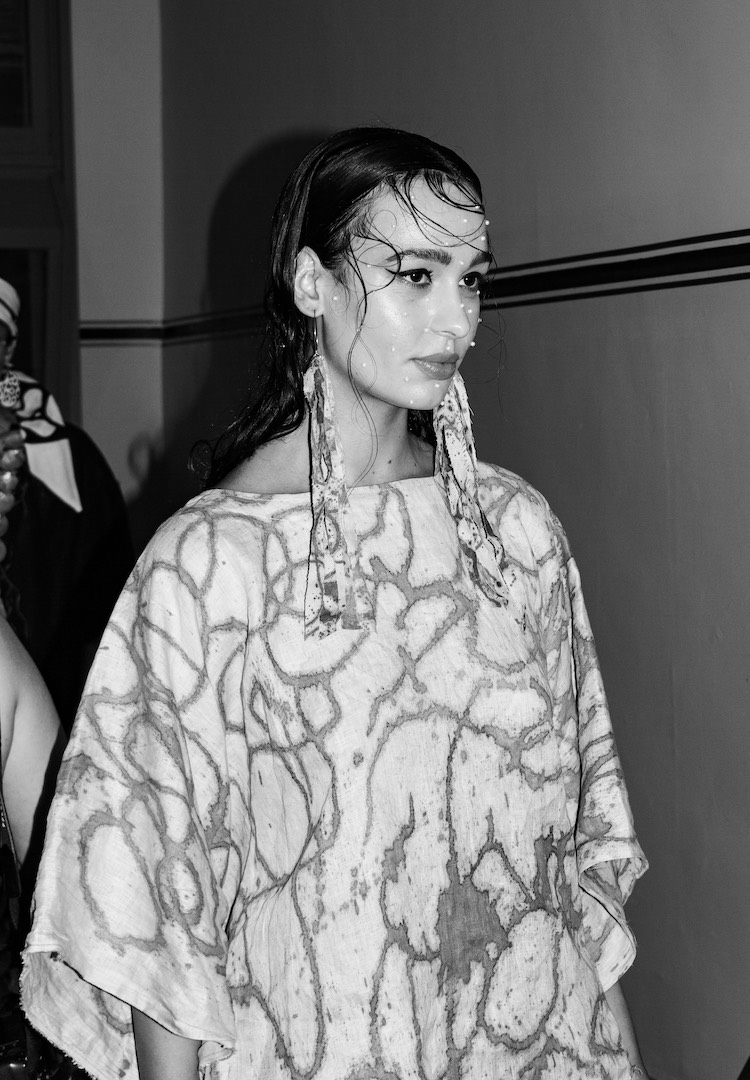
On Quandamooka Country, when the ocean foams in soft patterns and then morning tide rolls out, Delvene Cockatoo-Collins plucks glistening quampie shells from the mudflats along Moreton Bay. Gathering the pearl oysters is a family tradition that Delvene integrated into her Future/History collection, A Mermaid in the Bay.
After a decade of living away from Country with her husband and three sons, Delvene felt a yearning to return home to Minjerribah (North Stradbroke Island), the second-largest sand island in the world. Her ancestral land is bubbling with life: marine turtles nest along the shoreline, sugarbag bees fill the air with their humming, white herons wade through the estuarine shallows and an elusive white humpback whale migrates through the bay each year. Then there are generational stories of the mermaid, Warrajamba, mentioned over the years by her grandmother.
“When you’re here for solid amounts of time, you can feel things shifting… the tides, the seasons, how coastlines and sandbanks take on new forms year by year. It’s getting to know this place as an adult, then making sense of it and sharing that through my wearable art,” she says.
For Delvene, living on Country continues to foster her greatest moments of connection and creativity. Steeped in the traditions of the island, the quampie shells are washed by Delvene’s mother Evelyn, stitched into natural fibres sourced from the island such as the tawalpin and cotton tree, and then backed with linen. Delvene’s handmade natural dyes come from banksia bark, shed from the trees and collected by her brother Corey. “If it’s fallen to the ground, it’s fulfilled its purpose,” she explains.
The whole family is considerate in their gathering process, doing their utmost to tiptoe through the landscape and leave it completely unmarred. “I try to pass down traditional ways of knowledge to those who will preserve it properly. If we tell too many people, the places will become overexposed and there will be nothing left to use for cultural purposes. When doing my art practice, I always remember who I’m accountable to,” Delvene says.
Lillardia Briggs-Houston

When Lillardia Briggs-Houston pictures home, it’s the place where rolling sandhills meet the Marrambidya Wetlands; where rocky gorges cascade into deep watering holes, shaded by her great-grandfather’s black cypress pine and wattle and binyal (red river gum) scar trees.
On the Future/History runway, Lillardia translates freshwater into fabric, channelling the beauty of the cultural heritage sites across Narrandera into her dreamy hand-dyed silk designs. Swirling strokes of slate and brown reflect the earthy tones of the landscape, while patterns created around mussel shells are scattered across the fabric. Each look is paired with a necklace handcrafted from the mussels and bottlebrush seeds found in abundance along the Murrumbidgee River.
“Fashion and textiles are my forms of storytelling. Each stitch and brushstroke carries a cherished memory of Country, culture and kin. Knowing I have an audience who follow my work, I wanted to use my voice and platform to address the issue of continual destruction and desecration of cultural heritage on country, particularly in NSW where we are the only state or territory yet to have a stand-alone Aboriginal cultural heritage act… For me, it’s a deeply traumatic process, so I’ve dedicated my time [to] fusing cultural heritage and my love of textiles and fashion,” she shares.
All of her works featured on the Future/History runway were crafted from scrap fabrics, old test prints and reworked toiles to minimise textile waste. One pair of pants were overlayed with a rougher screen-printed fabric, a sensorial reminder of her hands running along the mussel’s growth rings as a child.
“There is a big push for more sustainable and ethical fashion, and I think First Nations designers really have their finger on the pulse when it comes to this [and that’s] greatly attributed to our upbringing and symbiotic relationships with Country,” explains Lillardia.
She uses slow ethical fashion as a vessel to raise awareness of the fight for more ethical legislation to protect and preserve Country. To stay up to date with her fashion-meets-advocacy work, head here.
Mob in Fashion opens doors to culturally safe spaces for First Nations people. Its opportunities span fashion design, photography, styling, hair and makeup and modelling. To learn more about this Australian fashion industry initiative, head here.

